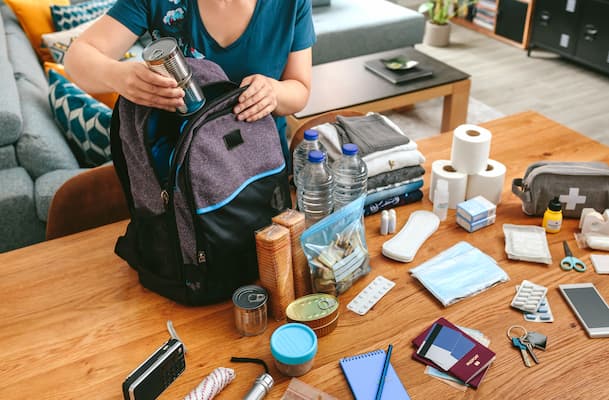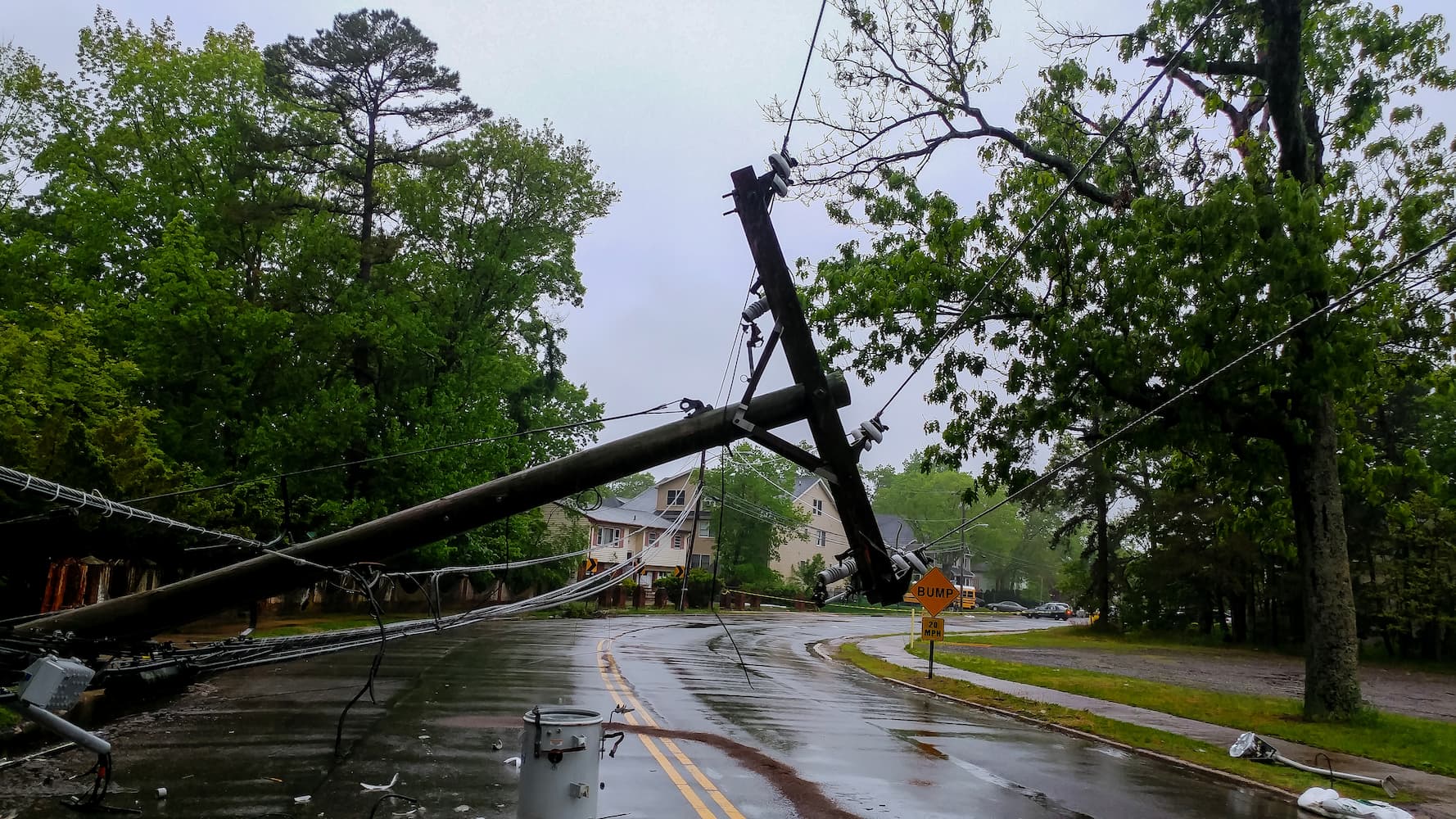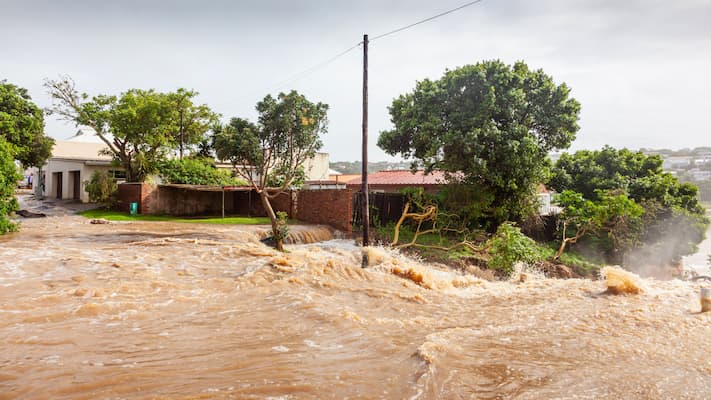If you live in a coastal state it is likely you understand the threat of inclement weather. It can be scary before every storm season not knowing how bad it is going to be.
But if you are prepared you can decrease the risk of damage.
In this article, we will discuss what inclement weather is and how you can better prepare in order to stay safe and dry.
What is Inclement Weather?
Inclement weather is when there are severe or extreme weather conditions. This includes dangerous weather conditions like heavy rain, tornados, monsoons, and severe flooding.
Hurricane season can start as early as May and typically runs until November. From October to June the U.S., specifically, the Pacific Northwest faces heavy rain and extreme weather conditions like tornadoes and monsoons.
Differences Between Hurricanes, Tornadoes, and Monsoons
With different weather conditions come different dangers so it is important to understand the differences.
Hurricanes – these form over the ocean with high winds reaching up to 74mph swirling in a circle
Tornadoes – this is when strong winds rotate in a column and touch down onto the surface
Monsoons – when hot weather warms up nearby oceans it causes heavy winds and rain
While these storms have a long history of causing destruction it is only getting worse as years go on.
The Severity of Inclement Weather is Increasing
As climate change gets worse we will be seeing an increase in inclement weather conditions as well as their severity.
Luckily, with modern technology, we are able to get alerted about potential storms 48 to 60 hours in advance. With this advance notice, it is easier than ever to prepare for a storm and decrease the dangers that come with inclement weather.
Dangers that Come with Inclement Weather
The United States has been impacted by heavy rains and floods this summer, with only more to come with other regions’ rainy season approaching. This season, tropical storms and hurricanes hit Texas, northern Virginia, Louisiana, New York City, New Jersey, Rhode Island, North Carolina, Tennessee, Alabama, southeastern Michigan, and Connecticut with heavy rains that caused flash flooding.
Even Arizona, a state with a mostly desert climate, was declared a major disaster area due to flooding driven by monsoons.
Europe has seen catastrophic summer floods in Austria, Germany, Belgium, France, Romania, Switzerland, and the United Kingdom. These floods were responsible for extremely devastating property damages and loss of life.
Property Damages
Inclement weather often brings heavy winds and excess water causing damages to homes and property.
Extreme winds knock down trees and carry dangerous debris that can break windows, destroy roofs, and cause other damage.
Moisture can wreak havoc on your most meaningful possessions; warping books, fading photographs, tarnishing jewelry and creating damage throughout the home. The extreme moisture can seep into your walls, carpets, and wooden flooring causing permanent damage and gross smells.
Excess moisture not only can ruin your possessions, but it can also compromise your respiratory health.
Tips for Staying Safe and Dry
Although hurricane season is only throughout the spring and summer, extreme weather conditions are year-round.
Every year, you should go through these tips to make sure you are prepared for anything.
1. Make a Plan
With us being able to be notified in advance of any storms coming your way it is easy to be prepared. In order to minimize stress and get ahead of any issues it is important you make a plan.
First, you will want to download a storm warning app like the Federal Emergency Management Agency (FEMA). This will alert you of any inclement weather coming towards you and keep you updated on any changes.
Then, in case of heavy winds, you will want to have a predetermined place in your home that your family can go to. It is recommended that the room have little to no windows or glass doors in order to keep you safe from glass breaking and debris.

Finally, make an evacuation plan in case you live in an evacuation zone. It is important to know which routes to take and what shelters are available to you. Talk with your family about the plan and set up a meeting place in case you are separated. Practice makes perfect so consider doing a drill especially if you have younger children.
Once you have a plan set it is time to put together a weather preparation kit.
2. Pack a Kit of Essentials
When it comes to being ready for a storm there is no such thing as being too over-prepared. Pack an emergency kit of essentials that can hold your family over in case of evacuation or power outages.
Inclement Weather Preparation Kit Checklist:
- Water (one gallon per person per day)
- Food (At least a three-day supply of non-perishable food)
- Battery-powered or hand-crank radio
- A National Oceanic and Atmospheric Administration (NOAA) weather radio with tone alert
- Flashlight
- First aid kit
- Extra batteries
- Plastic sheeting and duct tape
- Moist towelettes, garbage bags, and plastic ties
- Wrench or pliers
- Manual can opener
- Local maps
- Cell phone with charger
- Backup batteries
- E-150 moisture-absorbing pouches

Don’t wait until the storm is on its way to pack your bag. Prepare your bag proactively and keep it in your designated safe space in your home with a dehumidifier.
Even if you already have a kit from the year before it is recommended to take a look at it before each season to make sure everything is there and working.
3. Keep Documents Dry in a Safe
Nobody wants to lose important documents or memories due to flooding. Not only does it cause headaches trying to replace these documents but you also may need them in case of an emergency during the storm.
Keep your paperwork, photos, and other important documents safe from moisture and damage by placing them in a water-proof safe or container with moisture-absorbing pouches.

Important documents to include are:
- Wills
- Insurance policies
- Social security cards
- Bank account information
- Birth, marriage, and death certificates
Place the container in your safe room by your kit so you can easily grab it if you need to evacuate.
4. Defend Your Home with a Dehumidifier
Bring in any outdoor furniture, board up windows, and if deemed necessary get sandbags to help decrease any water damage. Place the sandbags wrapped in sheeting along openings like doors or garages. This will create a barrier, slowing down the process of water getting into your home.
While sandbags can help, it is not guaranteed to keep out all water from your home. Excess water and moisture in your home can cause damage and health risks.

Help protect your home and keep moisture at bay by placing dehumidifiers throughout your home. While it can’t stop flooding it will help to suck up excess moisture, decreasing the chances of property damage and related health risks.
Stay Dry with Eva-Dry
Eva-Dry is here to help. You can protect and preserve your possessions by keeping humidity levels in your home low. The RH, or relative humidity level should be no higher than 60%–all day long. A hygrometer can check your RH level to ensure your home is dry enough to keep you and your things safe from excess moisture. If your RH level is high, a dehumidifier will help to reduce excess moisture and keep your home, vehicles, documents, keepsakes, and family safe.
Eva-Dry has an entire line of dehumidifiers to suit your moisture control needs. Including E-150 moisture-absorbing pouches, renewable desiccant dehumidifiers, compact and efficient electric Peltier technology dehumidifiers, and our EDV-4000 with Rotary Desiccant technology that can reduce moisture levels in spaces up to 4,000 cubic feet.
Learn more about health risks and damage caused by extreme weather and how Eva-Dry can help you stay dry.




